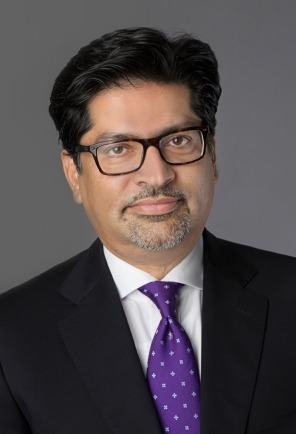Alvarez & Marsal Releases Saudi Arabia Banking Pulse for Q3 2021
- Profitability of top Saudi banks rise 20.3 percent as provisioning eases
- Modest growth in loans & advances (L&A) and deposits
- Operating income grew for the fifth consecutive quarter supported by growth in net interest income (NII)
Kingdom of Saudi Arabia – Leading global professional services firm Alvarez & Marsal’s (A&M) latest Saudi Arabia Banking Pulse for Q3 2021 highlights that despite low interest rates higher NII and reduced impairments drove double digit profit, of 20.3 percent, for top 10 banks in the Kingdom of Saudi Arabia (KSA) in Q3’2021, with liquidity expected to remain healthy for the remainder of 2021.
Co-authored by Asad Ahmed, Managing Director and Head of Middle East Financial Services, and Tariq Hameed, Managing Director, EMEA Financial Services, Saudi Arabia Banking Pulse examines data of the 10 largest listed banks in the Kingdom, comparing Q3’21 results against Q2’21 results. Using independently sourced published market data and 16 different metrics, the report assesses banks’ key performance areas, including size, liquidity, income, operating efficiency, risk, profitability, and capital.
The country’s 10 largest listed banks analyzed in A&M’s KSA Banking Pulse are Saudi National Bank (SNB), Al Rajhi Bank, Riyad Bank (RIBL), Saudi British Bank (SABB), Banque Saudi Fransi (BSF), Arab National Bank (ANB), Alinma Bank, Bank Albilad (BALB), Saudi Investment Bank (SIB) and Bank Aljazira (BJAZ).
The prevailing trends identified for Q3 2021 are as follows:
1. Aggregate L&A increased by 2.8 percent quarter over quarter (QoQ) in Q3’21 on the back of sustained momentum in retail mortgages. The revival of economic activity was supported by growth in lending to the manufacturing and commerce sectors at +6.3 percent QoQ and +4.9 percent QoQ respectively. Aggregate deposits for the top 10 banks grew at a much slower pace of 1.2 percent QoQ. Consequently, loan-to-deposit ratio (LDR) increased from 90.0 percent in Q2’21 to 91.5 percent in Q3’21, an increase of 41bps.
2. Operating income grew by 2.9 percent QoQ, compared to 8.4 percent QoQ in Q2’21, supported by growth in NII which increased by 3.5 percent QoQ. Fees and commission income increased marginally by 0.4 percent QoQ in Q3’21. A majority of the banks recorded increments in their income from investment and trading activity.
3. Net interest margin (NIM) declined to multi-period lows in Q3’21. NIM deteriorated by 11 bps QoQ to reach 3.01 percent after the sector-wide margin bounced back from its multi-period lows last quarter. The yield on credit decreased by 22 bps QoQ, while the cost of funds remained flat QoQ at 0.4 percent, with major banks reporting NIM contraction.
4. Despite the cost-to-income (C/I) ratio deterioration of five of the top 10 banks, C/I remained largely stable across the industry, at 35.2 percent. Aggregate operating expenses recorded a low single-digit rise of 3.0 percent QoQ.
5. Cost of risk (CoR) improved substantially for the top seven banks on the back of a decrease in total provisioning. The CoR decreased by 50 bps to 0.54 percent after it increased substantially in the previous quarter following the widely reported SNB merger. Provisioning decreased due to a spurt in impairments in the last quarter as the result of SAR 2.4bn of impairment booked by SNB in Q2’21.
6. Coverage ratio and non-performing loans (NPL) / net loan ratio improved for most of the banks. The return ratios noted a decrease in line with lower profitability levels. The aggregate net income decreased by 20.3 percent QoQ, supported by lower aggregate provisioning and higher NII. As a result, return on equity (RoE) rose to 12.0 percent in Q3’21 up from 11.1 percent in Q2’21.
Overview:
The table below sets out the key metrics:
Mr. Ahmed commented: “Saudi banks have continued to grow their business and profit alongside asset quality control, despite that QoQ the growth for most metrics in Q3’21 was lower than Q2’21. Moving forward we anticipate that digitalization trends and fintech opportunities will likely stimulate M&A activity in the sector. New digital banks are well-capitalized and will introduce positive competition among Saudi banks to provide customer-centric focused services and products and to optimize operating costs. Concurrently, the arrival of “Open Banking,” expected to be a part of the Saudi banking landscape in 2022, will allow customers to access financial services independent of their primary bank.”
About Alvarez & Marsal
Companies, investors and government entities around the world turn to Alvarez & Marsal (A&M) for leadership, action and results. Privately held since its founding in 1983, A&M is a leading global professional services firm that provides advisory, business performance improvement and turnaround management services. When conventional approaches are not enough to create transformation and drive change, clients seek our deep expertise and ability to deliver practical solutions to their unique problems.
With over 5,500 people across four continents, we deliver tangible results for corporates, boards, private equity firms, law firms and government agencies facing complex challenges. Our senior leaders, and their teams, leverage A&M’s restructuring heritage to help companies act decisively, catapult growth and accelerate results. We are experienced operators, world-class consultants, former regulators and industry authorities with a shared commitment to telling clients what’s really needed for turning change into a strategic business asset, managing risk and unlocking value at every stage of growth.
To learn more, visit: AlvarezandMarsal.com. Follow A&M on LinkedIn, Twitter, and Facebook.
###
CONTACT:
Kiran Makhija/ Prerna Agarwal, +971 55 471 0294/ +971 52 787 3189, Hanover Middle East
Sandra Sokoloff, Senior Director of Global Public Relations Alvarez & Marsal, +1 212-763-9853




